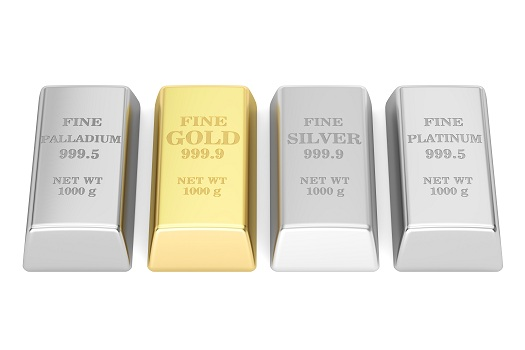What Is White Gold?
Gold comes in many forms and, in some cases, different colors and textures, which brings us to the topic of white gold. An alloy of gold, white gold is often used in jewelry making because of its bright, shiny appearance and other unique qualities. If you’re ready to learn more about this version of one of the most popular precious metals in the world today, read on for details provided by the experts from First National Bullion and Coin, the best place to buy gold in Carlsbad.
A Unique Metal Blend
White gold is a mixture of metals. It’s essentially a unique blend that consists of pure yellow gold along with various other metals. When combined together, this blend of metals yields a finished product with a silvery-white hue, similar to what’s common with silver or palladium.
An Appealing Choice for Jewelry
Since white gold isn’t as pure as what’s common with traditional gold bars and coins, it’s generally not as appealing for investment or collection purposes. However, white gold is incredibly useful and aesthetically appealing in the world of jewelry making.
Gold in its pure form is quite soft, which isn’t such a good thing for bracelets, rings, and other pieces meant to be worn and handled. This is the main reason pretty much all jewelry that contains some version of gold includes other metals in the mix. The blend used for white gold makes it more durable, which reduces the risk of dents, dings, and other things most people want to avoid when paying a lot of money for snazzy new accessories. The silvery hue is also pleasing to the eye, which is just as important with jewelry.
The Rhodium Coating
Another common feature of white gold is the coating typically added to complete the finished piece. This extra touch is another precious metal known as rhodium. Part of the platinum family of precious metals, rhodium is a whitish-silver metal. It’s often added to white gold jewelry as a final coating for extra strength and durability. It also produces a nice surface sheen, which further adds to the aesthetic value.
Still “Real” Gold
Even with some other metals mixed in to create its unique appearance, white gold is considered “real” gold, since there’s still actual gold in it. You’ll be able tell how much pure gold is in any properly manufactured jewelry piece because of the hallmark. This is the mark that provides details about purity and other important details. The mark is usually discreetly located on the inside.
Pros & Cons of White Gold
The main drawback with white gold is that over time, the rhodium coating eventually wears away. When this happens, the yellowish color of the gold included in the piece becomes visible. This problem can be easily resolved by having any pieces you wish to preserve recoated with rhodium. The most highly appreciated advantages of white gold include:
• The attractive hue and shine
• The lower price of a piece that has the same look as silver jewelry
• The neutral color that allows for more flexibility in matching with clothing and accessories
No matter what type of precious metals you’re looking to buy or sell, from palladium bars to silver coins or Carlsbad gold and bullion, trust the reputable dealers at First National Bullion and Coin. You can rely on our experienced professionals when you’re looking to add precious metals to your collection or investment portfolio. Call one of our precious metals experts today at (760) 253-8072.
The statements made in this blog are opinions, and past performance is not indicative of future returns. Precious metals, like all investments, carry risk. Precious metals and coins may appreciate, depreciate, or stay the same in cash value depending on a variety of factors. First National Bullion does not guarantee, and its website and employees make no representation, that any metals for sale will appreciate sufficiently to earn the customers a profit. The decision to buy, sell, or borrow precious metals and which precious metals to purchase, borrow, or sell are made at the customer’s sole discretion.


